My Homemade Cottage Cheese Recipe
Let’s talk about the ingredients you need when you’re learning how to make cottage cheese at home:
- Milk: You can use store-bought milk or farm-fresh milk. If using store-bought, use 2% or whole milk that is low-temp pasteurized, and non-homogenized. While it is possible to use homogenized milk I do not recommend it. I use Kalona Supernatural brand milk.
- Rennet: I only use animal rennet, but any rennet will do. I think liquid rennet works best. Click here for the one I use.
- Cultures: Click here for the starter cultures I use. These cultures are the best, and I also use them to make Feta. You need to start with the best cultures possible to make great cottage cheese.
- Cream: When using non-homogenized milk, scoop 1/2 a cup of cream off the top and set it aside in the fridge for the end of the recipe. Otherwise, you can use whipping cream (make sure the only ingredient is cream; again, I like Kalona Supernatural brand).
- Salt: Any sea salt will do. You can also use cheese salt.
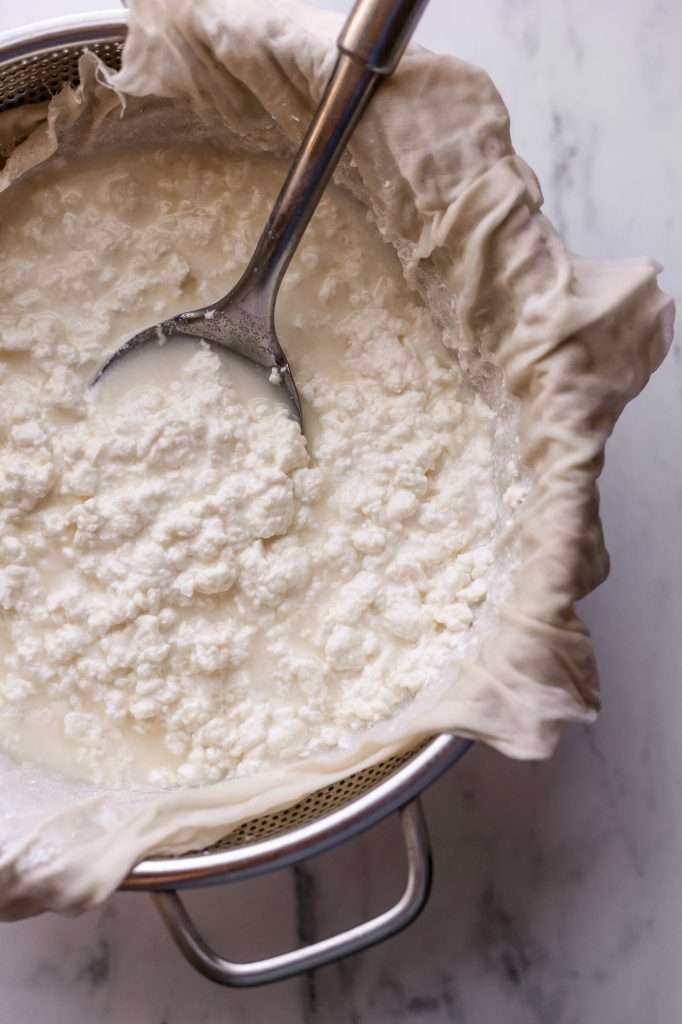
Is Cottage Cheese Fermented?
Most store-bought cottage cheeses are made by curdling milk with an acid, like vinegar, instead of relying on bacterial cultures to ferment the milk and produce acid. These cottage cheeses are not considered fermented foods and often contain added thickeners.
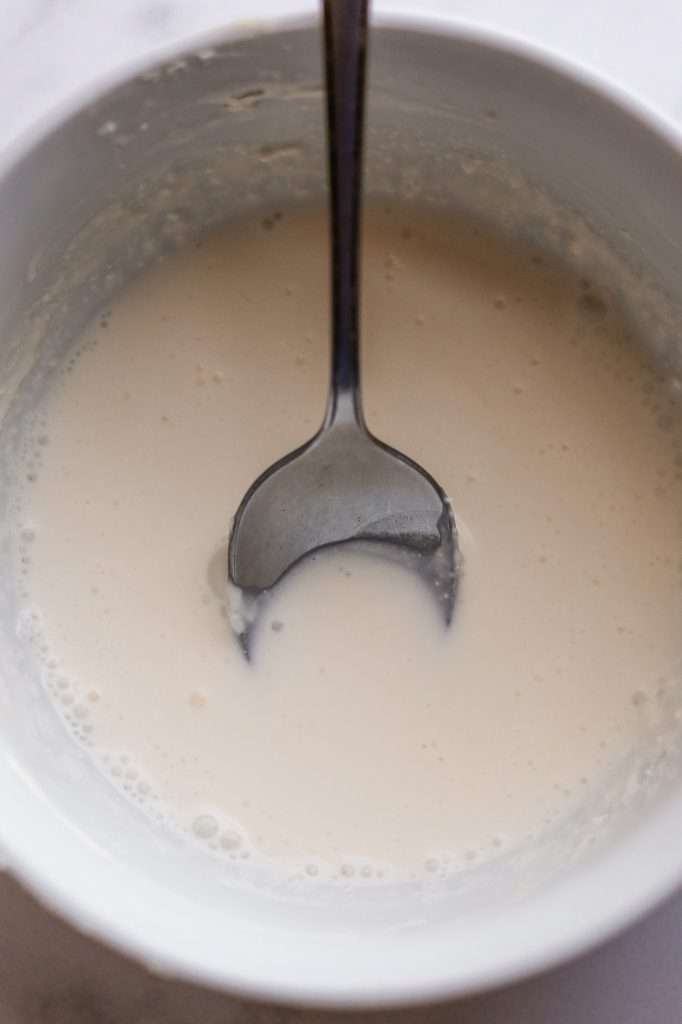
How is Traditional Cottage Cheese Made?
In some stores, you can find cottage cheese made traditionally with probiotic cultures. Cottage cheese made with probiotic cultures involves bacterial fermentation, is easier to digest, and is more beneficial for gut health.
Before the process was industrialized, cottage cheese was always homemade via culturing.
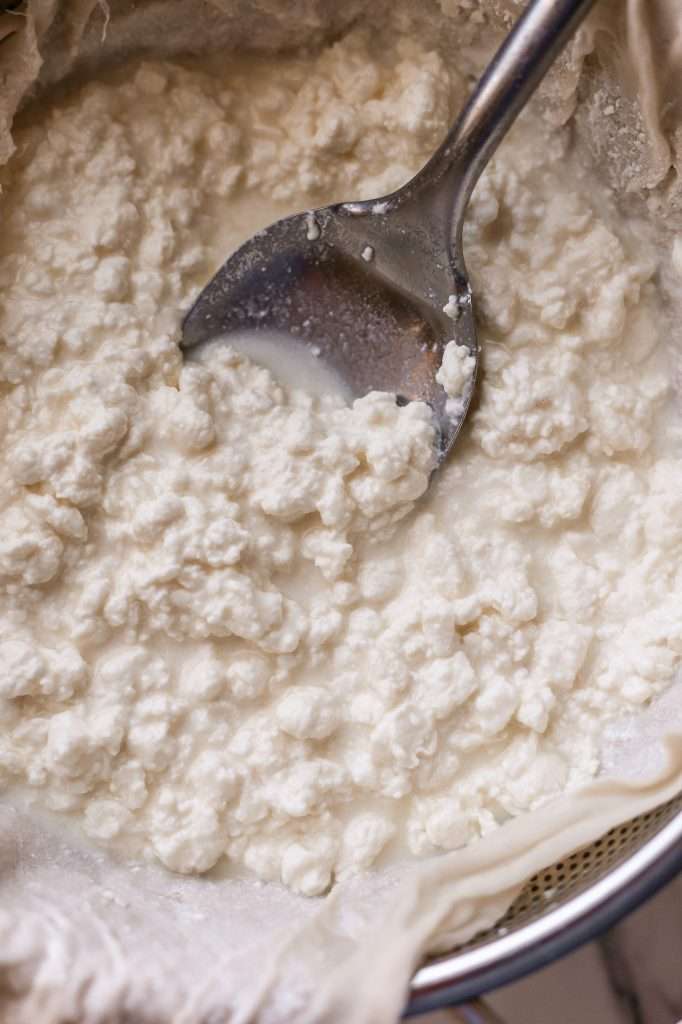
How to Make Cottage Cheese with Probiotic Cultures
Fresh milk from a local, trusted farm in your area is always the best to use in fermentation. I know that can sometimes be hard to get a hold of, so rest assured that store-bought milk works great. Make sure it’s high quality, organic, and from grass-fed animals.
Here is a couple of milk brands I can easily find in my area (Louisiana) that I love to use:
- Kalona SuperNatural
- Feliciana Creamery
When making cottage cheese with probiotic cultures, you can use a fresh packet of starter cultures or you can use some homemade cottage cheese that’s still fresh from your last batch.
How to Make Cottage Cheese From Scratch
As with all fermentation, when you learn how to make cottage cheese, know that it involves some waiting around. There are three main steps to making fermented cottage cheese from scratch (you still need to follow the full recipe below; this is just a summarized version of the main steps):
- Culturing: First, you will heat the milk to 86° F (30° C), turn off the heat, and sprinkle 1 packet of mesophilic cheese cultures over the top of the milk, then gently stir the cultures into the milk for 1 minute. Place a lid on the pot then wrap the pot in a warm towel or blanket to maintain a warm temperature. Let the pot sit undisturbed for 3 hours.
- Curd Formation: After 3 hours, dilute 1/2 teaspoon liquid rennet in 2 tablespoons of filtered water. Add the diluted rennet to the milk mixture and stir with a very gentle up-and-down motion for no more than 30 seconds. Place the lid back on the pot and wrap it in a warm towel or blanket to maintain its temperature. Let the pot sit undisturbed for 1 hour, then check for a clean break.
- Cutting and Heating: Cut the curd using four sets of cuts: up and down, side to side, and diagonally. Gently and slowly stir the curds through for five minutes, then rest for 20 minutes. Then repeat once more (stir gently for 5 minutes, rest for 20 minutes). Warm the curds gently over the lowest possible heat to 115° F. Then strain and mix with cream and salt.
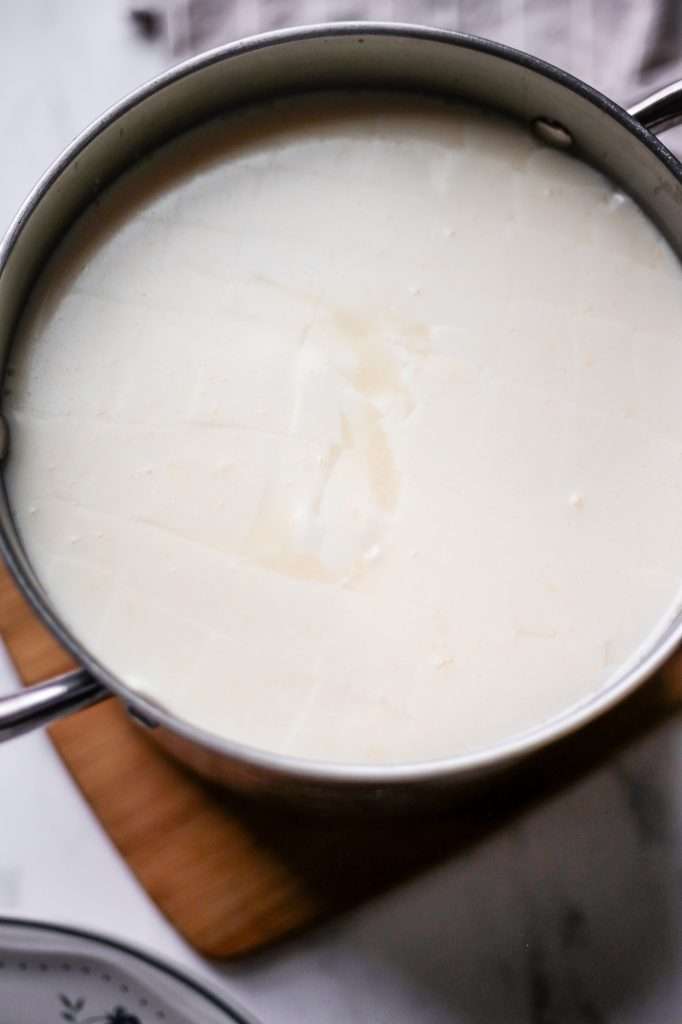
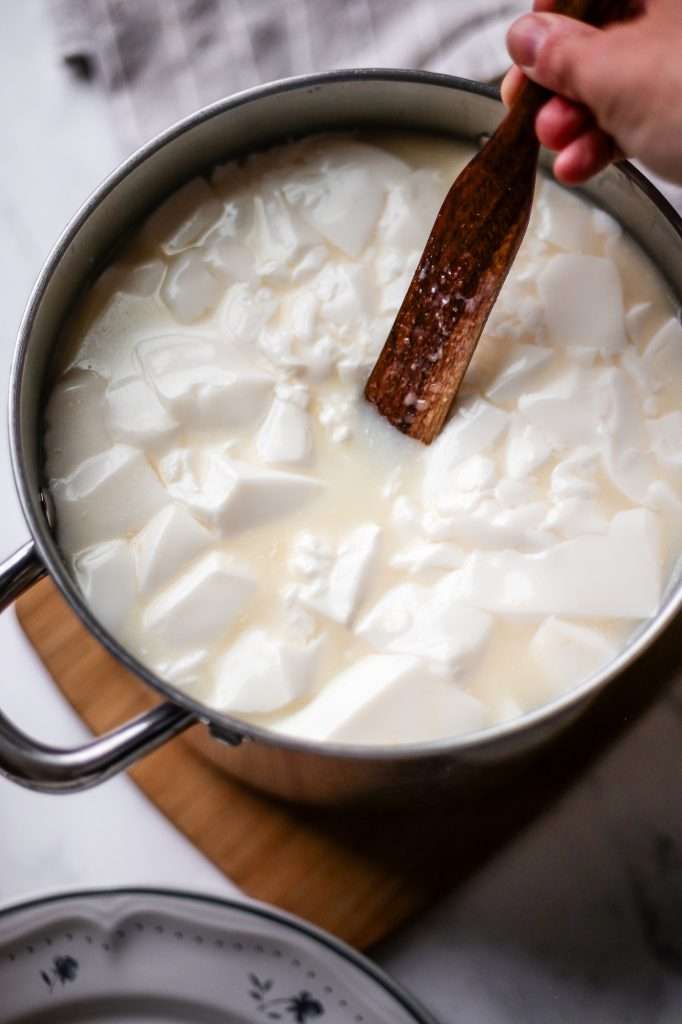
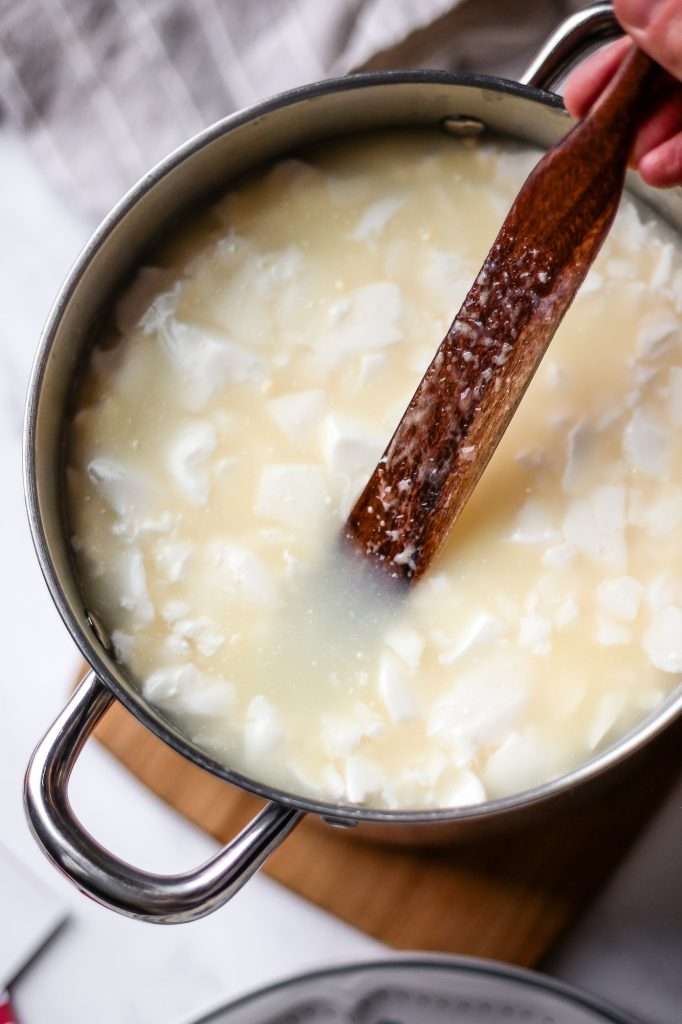
How Much Cottage Cheese Does a Gallon of Milk Make?
How much cottage cheese you get from a gallon of milk depends on the milk you use.
If you use whole milk, you will get a little over a quart of homemade cottage cheese. If you use 2% reduced-fat milk, you will get a little under one quart of cottage cheese.
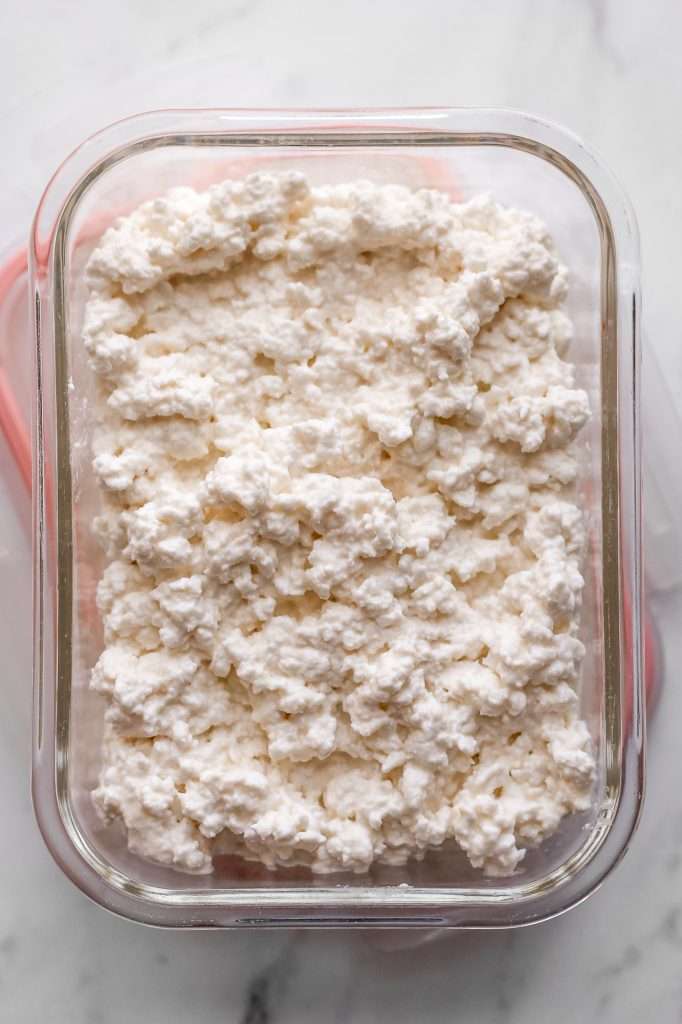
How Long Does Homemade Cottage Cheese Last?
Homemade cottage cheese made with probiotic cultures, rennet, and high-quality milk can typically last for 30-40 days in the refrigerator, provided it is stored properly in a clean, airtight container.
Also, how long it lasts depends on how sanitary you are. Ensure you use clean utensils when serving, and do not double dip.
To ensure freshness and safety, store it in the coldest part of the fridge, usually near the back, and avoid leaving it out at room temperature for extended periods. Before consuming, check for any signs of spoilage, such as changes in texture, smell, or taste.
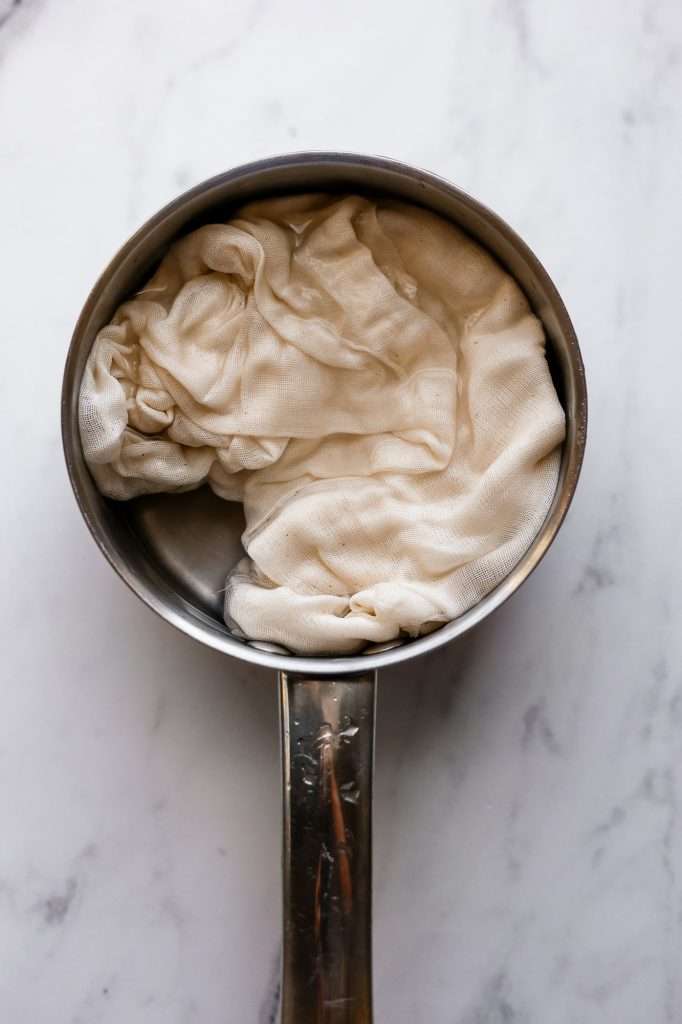
How to Make Cottage Cheese Tips
- Use the highest quality milk.
- Make sure your rennet is not expired.
- Make sure your starter cultures are fresh and not expired.
- Sterilize your butter muslin with vinegar and boiling water before using.
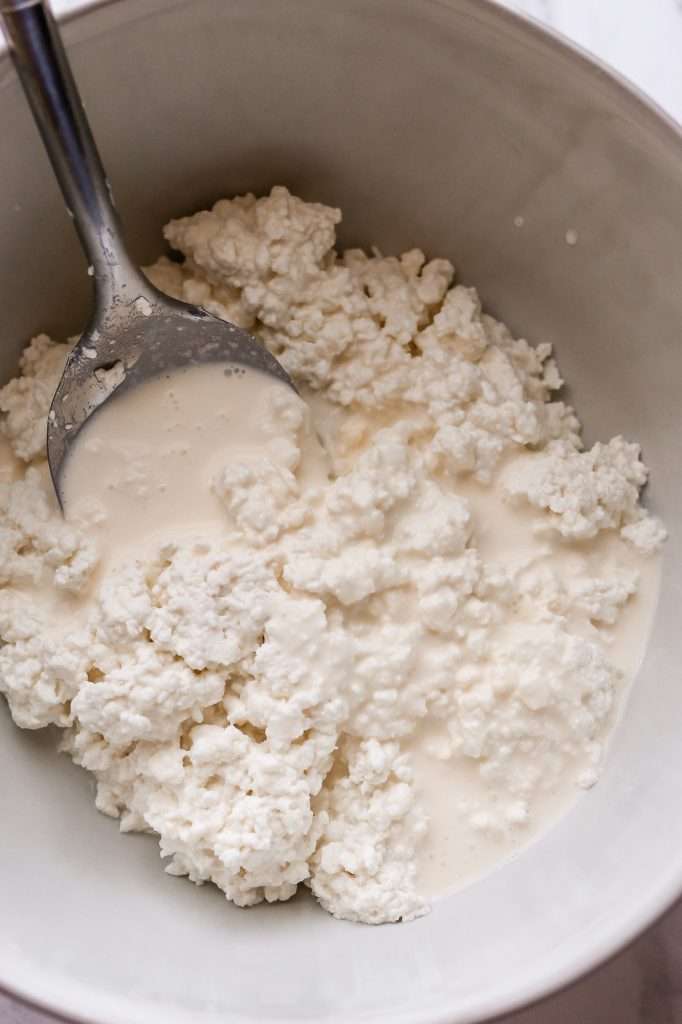

How to Make Cottage Cheese Fermented with Probiotic Cultures
Learn how to make Cottage Cheese that is thick and creamy, with live and active cultures. This healthy, high-protein cottage cheese has no thickeners, carrageenan, or artificial ingredients. It’s made with only organic milk, probiotic cultures, rennet, cream, and salt.
- Prep: 20 minutes
- Cook: 1 hour
- Total Time: 5 hours 20 minutes
Ingredients
- 1 gallon milk (non-homogenized, see notes)
- 1 packet mesophilic starter culture
- 1/2 tsp liquid rennet
- 1/2 cup cream (see notes)
- 1/2 teaspoon salt
Instructions
- when using non-homogenized milk, scoop 1/2 cup of cream from the top of the milk and set aside.
- You will see a lot of gently stir directions in this recipe, that means stir slowly and avoid making bubbles.
- Heat one gallon of milk over low heat to 86° F (30° C).
- When the milk reaches 86° F (30° C) turn off the heat and sprinkle 1 packet of cheese cultures over the top of the milk, then gently stir the cultures into the milk for 1 minute.
- Place a lid on the pot then wrap the pot in a warm towel or blanket to maintain a warm temperature. Let the pot sit undisturbed for 3 hours.
- After 3 hours, dilute 1/2 teaspoon liquid rennet in 2 tablespoons of filtered water.
- Add the diluted rennet to the milk mixture and stir with a very gentle up and down motion for no more than 30 seconds.
- Place the lid back on the pot and then wrap the pot in a warm towel or blanket to maintain a warm temperature.
- Let the pot sit undisturbed for 1 hour.
- After 1 hour, check for a clean break: slice the curd once and pull it back a little with the knife. You should see whey fill the crack and your knife should be clean. If you do not have a clean break yet, let it sit for another hour or two then check again.
- Cut the curd using four sets of cuts: up and down, side to side and diagonally.
- Gently and slowly, stir the curds all the way through for five minutes, then rest for 20 minutes. Then repeat once more (stir gently for 5 minutes, rest for 20 minutes).
- Warm the curds to 115° F, gently over the lowest possible heat, stirring continuously but gently. Stirring keeps the curds separated and allows the curds to heat evenly. Be careful to only increase the temperature of the curd about 3° every 5 minutes. It may be necessary to turn the heat off then back on during the process.
- When the curds reach 115°F, hold the heat at 115°F for 10 minutes. Continue to stir the curd during this time to ensure even heating.
- The curds should be about the size of dried beans and should be slightly firm but somewhat soft.
- Strain the curds through a colander lined with clean butter muslin and allow the whey to drain off completely.
- In a clean container with an airtight lid, combine the curds with the salt and cream.
- Store in the refrigerator for up to 30 days.
Notes
- Milk: You can use store-bought milk or farm-fresh milk. If using store-bought, use 2% or whole milk that is low-temp pasteurized, and non-homogenized. While it is possible to use homogenized milk I do not recommend it. I use Kalona Supernatural brand milk.
- Cream: When using non-homogenized milk, scoop 1/2 a cup of cream off the top and set it aside in the fridge for the end of the recipe. Otherwise, you can use whipping cream (make sure the only ingredient is cream; again, I like Kalona Supernatural brand).
- Rennet: I only use animal rennet, but any rennet will do. I think liquid rennet works best. This is the one I love (click here).
- When making cottage cheese with probiotic cultures, you can use a fresh packet of starter cultures or you can use some homemade cottage cheese that’s still fresh from your last batch.


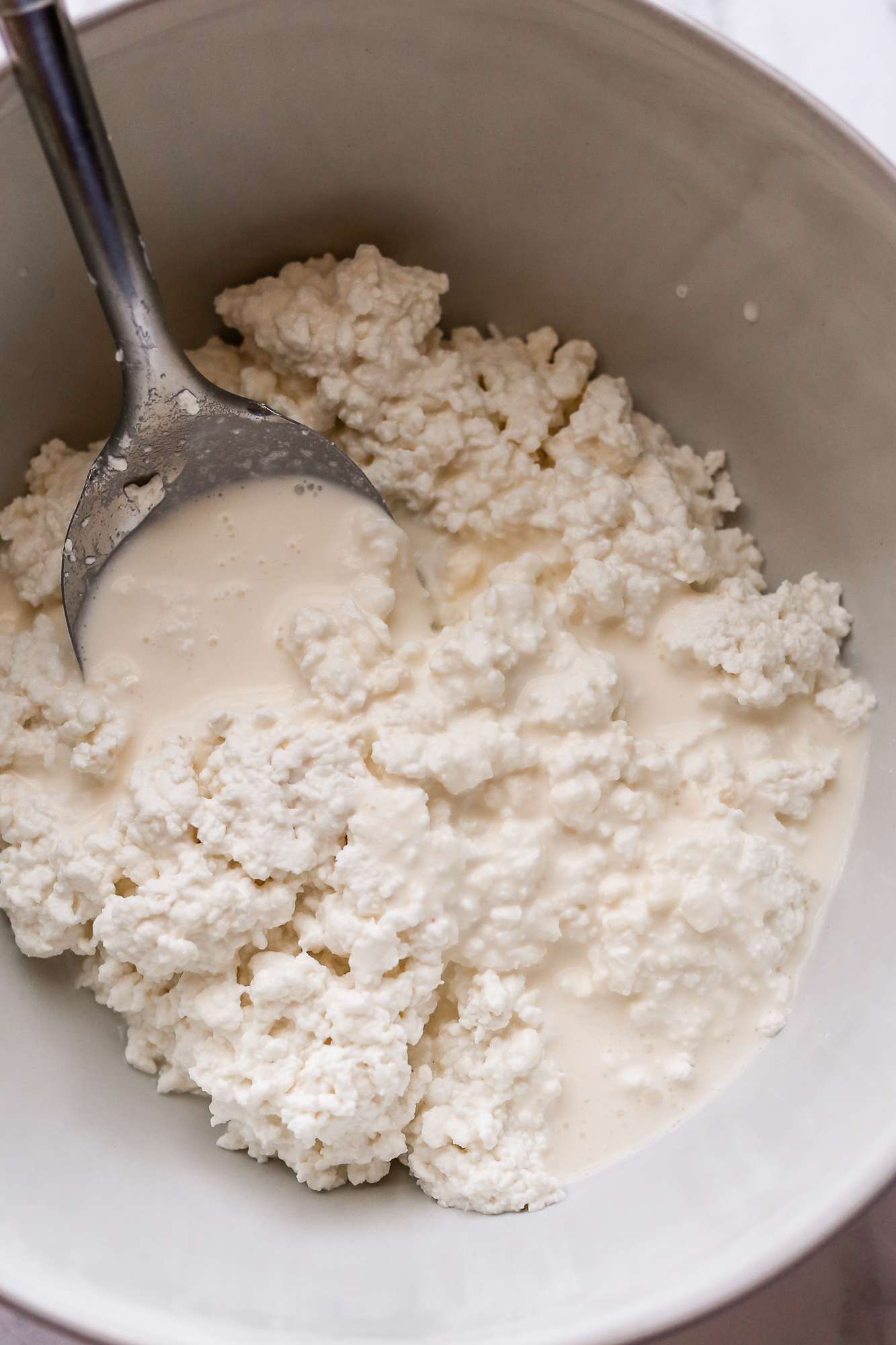












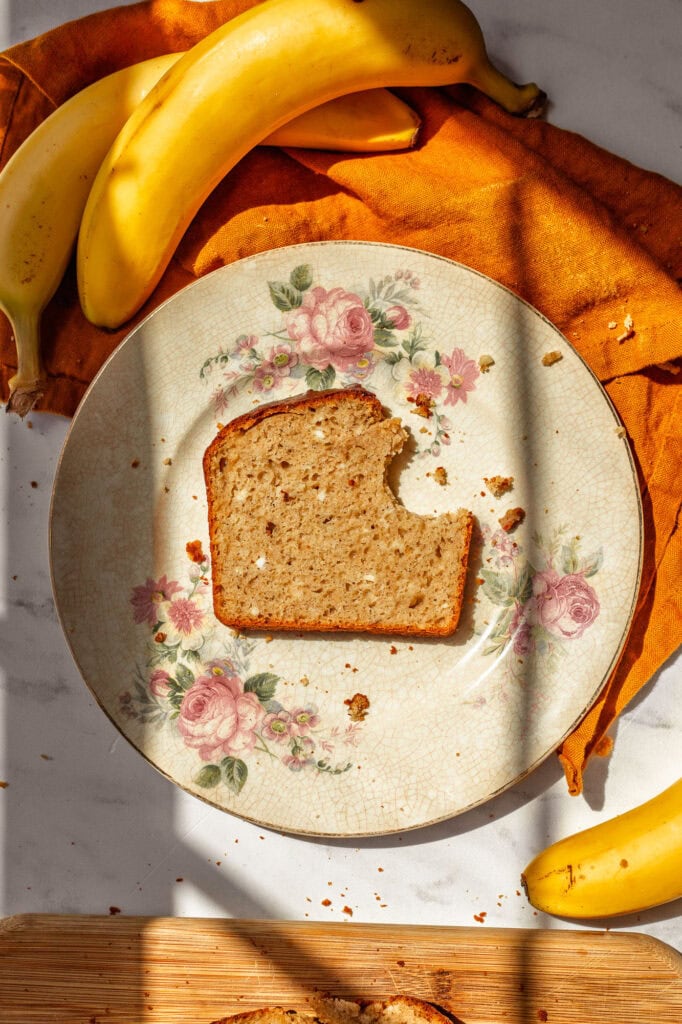
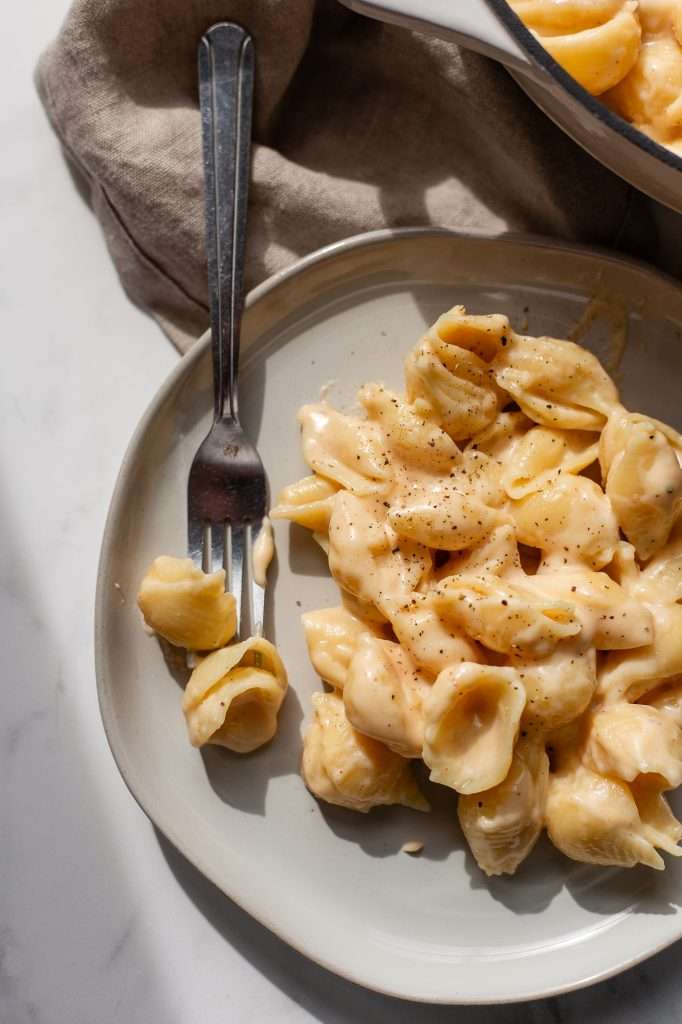




Raw goat milk. Will it work well?
I haven’t tested the recipe with raw goat milk, so I do not know for sure. It should work in theory. Let me know if you try it!
Hi Kaitlynn! Thanks for creating this recipe for us! Two questions: can we use the yogurt strainer to separate the whey, and when you say “warm towel” is that something that needs to be fresh out of the dryer and checked to maintain warmth or just bundle the pot? Thanks!!!
you can use the yogurt strainer! It just needs to be a fluffy towel or something like a fleece blanket that can insulate the pot a bit to keep the warmth in.
It was spectacular with raw goat milk. So creamy and delicious! My goat milk was 2 days old for anyone else trying it
Awesome! I’m glad it was great with raw goat milk. I hope I can get some soon to try it too.
Truly superb 🤌🏼 and easy to follow instructions!
How much cottage cheese starter would you use in order to substitute the starter packet?
it needs to have live active cultures, and about 2 tablespoons will do.
Hi Kaitlynn! Can I use homemade yogurt as the starter cultures? And if so, how much?
Or I also have the Good brand organic whole milk cottage cheese. Can I use that?
I haven’t tried it, but yogurt could work. Maybe try two tablespoons.
Can I freeze fresh made cottage cheese for later use as starter?
Possibly! I haven’t tested it so I don’t know for sure.
I used raw sheep milk and the end result was dry and rubbery. Tastes good but not the right texture. Any tips on where I might’ve gone wrong?
rubbery texture means you heated the milk too much too fast, or you used too much rennet
Hey Kaitlynn! I have liquid animal rennet from fermentaholics because I couldn’t get your recommended brand in Canada. On the back of the bottle it says 1/4 tsp per gallon of milk. Should I follow the recipe with 1/2 tsp or go with 1/4 tsp? I don’t want to mess it up because raw milk is expensive haha. 😆 thank you!
Hmmm… good question! I want to say stick to the recipe, but their rennet may be more concentrated than the one I used. Maybe meet in the middle and do 1/4 tsp + 1/8 tsp? Let me know how it turns out!
Thanks so much for your reply! I did exactly that with the rennet, 1/4 tsp + 1/8 tsp. The curds are a bit rubbery but I heated them very slowly so I think next time I’ll cut it down to just 1/4 tsp but I wanted to be sure the curds would actually set so I’m glad I did more today. Overall I’m very pleased as this was my first time making cheese ever! As a Canadian it’s impossible to find cultured cottage cheese anywhere in stores here so I decided I needed to learn how to make it myself. I appreciate your recipes and your reply!!
Hi, excited to try your recipe! I was wondering though, I thought anything above 80° would kill the live cultures? Can you help me understand
No, the cultures thrive perfectly well at the temperatures listed in the recipe!
Hi there. I know you said that you don’t recommend using homogenized milk but that’s all I could find in my part of the state. I’m at the 3 and a half hour more as I write this and still no curd at all. I’ll follow your instructions and see what happens after another hour or so and see what happens but I’m wondering if I’m not getting results because of the homogenized milk?
yeah, I never get good results with homogenized milk.
Add a quarter teaspoon of calcium chloride (dilute it in a tablespoon or so of water) to help with the curd separation process in homogenized milk!
good tip! I’ll have to try this!
Kaitlynn,
Thanks for this. I am very excited to try it. My question is if you have used an instant pot on “yogurt” mode to keep warm when needed? …if not, do you think that would work well? Thanks, Rhonda
yes! I think that will work great for holding the temp!